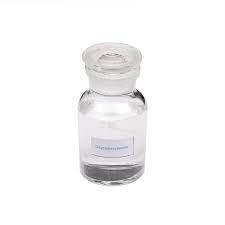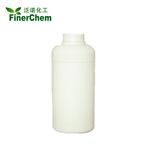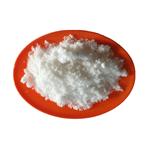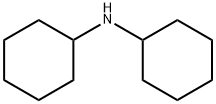Health Hazard of Dicyclohexylamine
Sep 16,2019
Dicyclohexylamine is a secondary amine with the chemical formula HN(C6H11)2. It is a colorless liquid, although commercial samples can appear yellow. It has a fishy odor, typical for amines. It is sparingly soluble in water. As an amine, it is an organic base and useful precursor to other chemicals.
It is amazing when a single chemical can be so versatile in the widely diverse manufacturing industry. To be assumed, with great potential comes great demand. Dicyclohexylamine is one such chemical, and Parchem – fine & specialty chemicals is eager to supply you with the amount you need, when you need it.

Application
Dicyclohexylamine is a secondary amine, and is a colorless liquid with a typical amine odor. Dicyclohexylamine is utilized similarly to cyclohexylamine in the following applications:
• antioxidants in rubber and plastics
• vulcanization accelerators for rubber
• corrosion inhibitors in steam pipes and boilers
• agrochemicals
• water treatment
• textile chemicals
• catalysts for flexible polyurethane foams
Dicyclohexylamine acts primarily as an organic synthesis intermediate, making it an ideal dye precursor.
Health Hazard
Dicyclohexylamine is a strong irritant to skin and mucous membranes. Direct skin contact with the liquid or vapor should be avoided. Its systemic effects in man include nausea and vomiting, anxiety, restlessness and drowsiness. Individuals repeatedly exposed to this chemical may develop sensitivity to it .
Inhalation, ingestion or skin contact with material may cause severe injury or death. Contact with molten substance may cause severe burns to skin and eyes. Avoid any skin contact. Effects of contact or inhalation may be delayed. Fire may produce irritating, corrosive and/or toxic gases. Run off from fire control or dilution water may be corrosive and/or toxic and cause pollution.
Potential Health Effects
Eye: Contact with eyes may cause severe irritation, and possible eye burns.
Skin: May cause skin sensitization, an allergic reaction, which becomes evident upon re-exposure to this material. May cause severe irritation and possible burns.
Ingestion: Harmful if swallowed. May cause severe gastrointestinal tract irritation with nausea, vomiting and possible burns.
Inhalation: Causes chemical burns to the respiratory tract.
Chronic: Chronic exposure may cause effects similar to those of acute exposure.
- Related articles
- Related Qustion
- Dicyclohexylamine: Overview, Antibacterial Activity and Detection Method May 11, 2024
Dicyclohexylamine inhibits bacterial growth via spermidine synthase, showing sensitivity in Streptococcus uberis, with potential therapeutic applications and LC-MS/MS detection in honey.
- Unleashing the Potential of Dicyclohexylamine in Catalytic Reactions Dec 26, 2023
Dicyclohexylamine can be synthesized by diphenylamine using supported rhodium catalysts and it is a versatile compound with diverse applications as reactant and catalyst.
- What is Dicyclohexylamine? Oct 25, 2023
Dicyclohexylamine is a clear yellow liquid with a faint fishlike odor. It is used as acatalyst for paint, varnishes and inks. May be toxic by ingestion. Severely irritates skin, eyes and mucous membranes.
Sodium alginate was first described by the British chemist Edward C C Stanford in 1881, when he patented its extraction from seaweed. Seaweed is not easily cultivated, so the wild weeds are still collected in the production process. The aci....
Sep 16,2019Organometallic compoundsGlyoxylic acid or oxoacetic acid is an organic compound that is both an aldehyde and a carboxylic acid. Glyoxylic acid is a liquid with a melting point of -93°C and a boiling point of 111°C. It is an intermediate of the glyoxylate cycle, wh....
Sep 16,2019Chemical ReagentsDicyclohexylamine
101-83-7You may like
- What is the effect of water on 3-aminopropyltriethoxysilane (APTES)?
May 17, 2024
- The solubility of Succinic anhydride
May 11, 2024
- How to synthesize Benzyl vinylcarbamate?
Mar 26, 2024
Dicyclohexylamine manufacturers
- Dicyclohexylamine
-

- $2.00 / 200KG
- 2024-05-17
- CAS:101-83-7
- Min. Order: 1KG
- Purity: 99%
- Supply Ability: 1000mt/year
- Dicyclohexylamine
-

- $0.00 / 25KG
- 2023-08-29
- CAS:101-83-7
- Min. Order: 1KG
- Purity: 99%
- Supply Ability: 50000KG/month
- Dicyclohexylamine
-

- $0.00 / 180kg
- 2023-07-01
- CAS:101-83-7
- Min. Order: 1080kg
- Purity: 99.0%
- Supply Ability: 14.4tons




